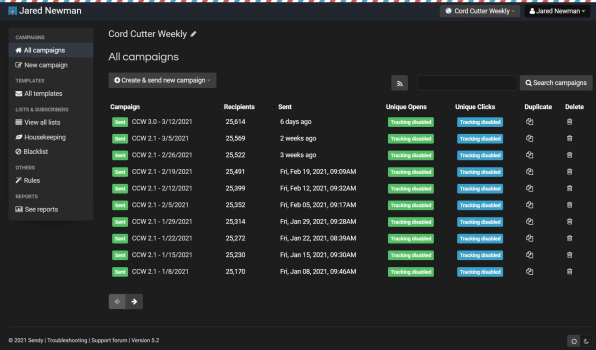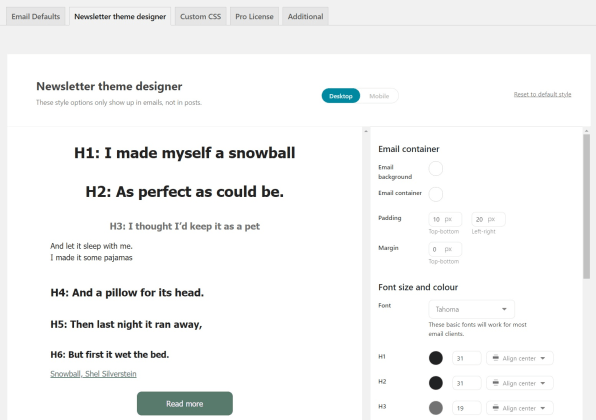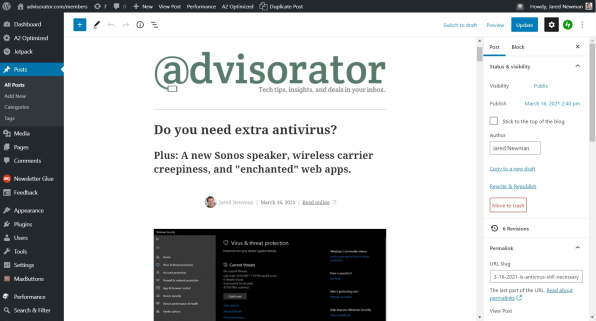Let me start by saying that I appreciate what Substack is trying to do for journalism.
The promise of the hosted publishing platform is that anyone can start a subscription-based publication—primarily as a newsletter—without having to worry about building a website, setting up a membership system, and fussing with design. Just put good words in, and if your audience is devoted enough, money will come out. For a growing number of writers, it’s a welcome reprieve from feeding the algorithms of Google, Facebook, and Twitter—and a chance to make some decent money along the way.
But one thing I’ve realized in nearly five years of publishing my own independent newsletters is that doing things the hard way has its own rewards, from keeping more of the money to maintaining a stronger sense of independence. As more writers start building up their own newsletter businesses, I suspect a lot of them will discover this for themselves.
Starting from scratch
If we’re being honest, I probably would have jumped on board with Substack myself if it had been available when I started writing a newsletter about cord-cutting in 2016.
Nearly every newsletter service back then was focused on email marketing instead of editorial writing, and they all charged high prices if your mailing list grew too large. As I started to outgrow Mailchimp’s 2,000-subscriber limit for free users, self-hosting seemed like the only option that didn’t cost upward of $30 per month. (Mailchimp did have its own writer-friendly service called Tinyletter, but it, too, had a 5,000-subscriber limit. As Simon Owens points out, Mailchimp missed a huge opportunity by letting it languish.)
Since the end of 2016, I’ve been using a service called Sendy, which charges a flat fee for newsletter software that runs on your own website and hooks into Amazon Simple Email Service (SES) to deliver the emails. Sendy’s newsletter editing software was crude compared to Mailchimp’s, and setting up SES was a hassle. But it promised unlimited growth for practically no cost. Even now, with more than 25,000 subscribers, my bill from Amazon is about $10 per month.

The timing for Substack also wasn’t quite right when I started thinking about a paid subscription tech-advice newsletter in 2018. At the time, the service was still in beta—far from being the phenomenon it is now—and I was deeply wary of tying my publication’s fate to an unproven startup.
So again, I did things the hard way, spending weeks wrapping my head around Stripe Checkout and gluing together a subscription system using an automation service called Zapier. Like Sendy, it all felt a bit crude, but it worked. (I had a conversation with Substack cofounder Hamish McKenzie about joining the platform in mid-2019, but at that point it didn’t quite fit with the way I had things set up.)
My system has matured a bit since then. I moved my subscribers from Stripe over to Patreon-owned Memberful last fall, which let me set up a members-only WordPress site and subscription portal. And a couple of weeks ago, I started using a WordPress plugin called Newsletter Glue, which lets me instantly send out WordPress posts as nicely formatted newsletters (still via Sendy).

That’s not the only way to do things now either. Automattic, the maker of WordPress, recently launched its own plugin for sending out newsletters through WordPress, and Memberstack offers a highly customizable way for WordPress users to manage subscriptions. Just this week, the self-hosted publishing service Ghost released a major update that makes building newsletters and membership programs much easier. And those are just a few examples; the newsletter revolution Substack helped spark has in turn prompted a boom in tools for doing it yourself.

Of course, it hasn’t all been smooth sailing for me. At one point Amazon threatened to suspend me due to a problem with spam sign-ups that I had to solve myself, and I had to switch web hosts a couple of years ago when my old one refused to update my newsletter database for reasons it never quite explained. But after five years, I’ve essentially built my own personal, self-hosted version of Substack, and I love it.
Worth the effort
Why go through all of that hassle when Substack promises to make things so much easier?
Of course, it’s partly about the money. Substack’s cut (10%, plus Stripe’s transaction fee) is a lot steeper than what I initially paid to take subscribers through Stripe, and even Memberful’s cut (4.9%, plus Stripe’s fees and a flat $25 per month) puts me ahead with the roughly 500 paid subscribers I have now.
But over time, the less-tangible benefits of rolling your own newsletter solution have also become clearer.
The tools for doing things your own way keep getting better over time.
With Newsletter Glue, I can customize the look and feel of my newsletters in ways that Substack doesn’t allow, and I can build out my members-only website exactly how I want. Last week I finished adding the complete archives of both my newsletters exclusively for paid subscribers, something that would have been harder to pull off with Substack’s rigid formatting. By contrast, all Substack publications look like Substack publications, regardless of who creates them. Perhaps best of all, I can also disable tracking for opens and link clicks so that subscribers can read my newsletters in privacy.
It’s also just nice to not be associated with any particular brand other than my own. Substack likes to say that it’s not a publisher, and that writers enjoy full independence on its platform. But it’s still a platform in the end, which means it has to wrestle with quasi-editorial questions of how to moderate incendiary content and who to lure onto the platform with up-front payments. Substack’s most prominent voices will inherently color people’s perceptions of the platform, which in turn makes me happy to have a brand that’s mine alone.
That’s not to say every newsletter writer on Substack should abandon the platform in favor of hacking together a system like mine—or worse, going with whatever Facebook and Twitter are cooking up. Every solution has its downsides, and not everyone has the time or technical ability to set up a website, a WordPress page, and a payment platform.
But one thing I’ve seen firsthand is how the tools for doing things your own way keep getting better over time. Meanwhile, the costs of taking the easy road will only continue to pile up.
(52)